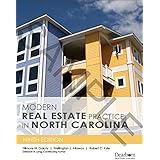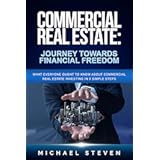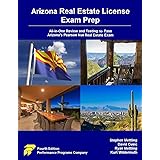In the insightful discussion above, financial experts Ken McElroy and Robert Kiyosaki, along with tax strategist Tom Wheelwright, reveal the hidden mechanics of our financial system. They challenge conventional wisdom, explaining why traditional saving can be a “losing” strategy and how embracing debt, particularly in real estate, can unlock significant wealth and tax advantages. For instance, Ken McElroy highlighted their current $300 million in construction projects in Arizona, demonstrating large-scale application of these very principles.
Furthermore, the discussion illuminates how understanding concepts like depreciation can lead to reporting a $300,000 legal loss on a property that actually generates $700,000 in cash flow annually. This article expands on these powerful ideas, providing a deeper dive into the strategies discussed and how everyday investors can begin to apply them for their own journey toward real estate success and financial freedom.
Deconstructing the Financial System: A Banker’s Playbook
The conventional financial system, as Ken McElroy points out, often directs the “masses'” money into banks, pensions, and insurance products. These institutions, in turn, leverage this capital. For example, a bank might give you a paltry 1% interest on your savings, yet turn around and charge 4% or more when lending out that same money. This simple act creates a 3% profit margin for the bank, effectively making money from your money.
This system operates on what’s known as fractional reserve banking. As Robert Kiyosaki illustrates, a single dollar deposited can be “ramped up 10 times.” This means banks only need to hold a fraction of deposits and can lend out the rest, creating new money in the process. The money you deposit becomes a liability for the bank, as they owe it back to you with interest. Conversely, when they lend it out, the debt becomes an asset for the bank. This fundamental imbalance is why banks are ubiquitous, often seen in grand buildings lining city streets.
Understanding Debt: Asset or Liability?
For most people, debt is a four-letter word associated with financial burden. However, Ken McElroy and Robert Kiyosaki flip this perspective. They emphasize that debt, when used strategically to acquire cash-flowing assets, transforms into a powerful tool for wealth creation. For instance, when Ken borrows from insurance companies or pension funds to finance large real estate projects, he’s using “other people’s money” (OPM). The key distinction lies in whether the debt is used to purchase a liability (like a depreciating car or personal consumption) or an income-generating asset.
Consider the example of fixed-rate debt. With inflation recently surging from 2% to over 5-6%, securing a fixed-rate loan means your payment remains constant while the value of the money you’re paying back decreases. This hedges against inflation, benefiting the borrower who holds the fixed debt. In contrast, banks often prefer variable-rate debt, allowing them to adjust interest rates with the market, transferring inflation risk to the borrower.
The Power of Real Estate Depreciation and Tax Incentives
One of the most compelling advantages of real estate investment is the ability to defer or even eliminate taxes through depreciation. The government incentivizes real estate development because it needs housing. Instead of directly building it, they offer tax breaks to private investors. As Tom Wheelwright explains, this started significantly with Ronald Reagan’s policies, aiming to stimulate the housing market.
Real estate investors can depreciate the value of buildings (not land) over 27.5 years for residential properties. Imagine owning an apartment complex valued at $30 million, with $2.5 million allocated to land. The remaining $27.5 million can be depreciated. This allows an investor to legally claim a $1 million deduction annually, even if the property is increasing in market value. If that property generates $700,000 in annual cash flow, the depreciation deduction creates a reported loss of $300,000, despite the investor having significant cash in hand. This powerful strategy allows professional investors like Ken McElroy to legally defer taxes for years, often preferring to “buy and hold” rather than sell and trigger capital gains.
Navigating the Tax Quadrants
Robert Kiyosaki’s well-known “Cashflow Quadrant” illustrates how much tax you pay depends on where you earn your income:
- Employee (E): Typically pays around 40% in taxes, often having little control over deductions. They are considered consumers, contributing heavily to the tax base.
- Self-Employed (S): Can pay up to 60%, especially if not diligently managing their business as an asset. They might fall into “under the table” transactions to avoid high taxes, as Tom Wheelwright noted.
- Big Business Owner (B): With 500+ employees, these individuals typically pay around 20% in taxes. The government incentivizes job creation, thus offering more tax benefits. This is why figures like Warren Buffett often pay a lower tax rate than their secretaries.
- Investor (I): Professional investors often pay close to 0% in taxes, aligning their activities with government incentives like housing, energy, agriculture, and technology. This quadrant leverages strategies like depreciation and debt.
Mastering Cash-Out Refinancing and Value-Add Real Estate
The concept of “cash-out refinancing” is a cornerstone strategy for advanced real estate investors, beautifully illustrated by Ken McElroy’s Flagstaff property example. This process allows investors to extract equity from a property, often tax-free, by increasing its value and then refinancing it.
Here’s a breakdown of Ken’s case study:
- Initial Acquisition: Bought a building for $19 million with $15 million in debt and $4 million in equity. The Net Operating Income (NOI) was $700,000 annually.
- Value-Add Strategy: The property was neglected. Ken identified “rent lift opportunities” such as adding washers and dryers (which generated an extra $40 per unit per month) and upgrading vacant units. These improvements methodically increased the property’s attractiveness and rental income.
- Increased NOI: Over about three years, these strategic improvements boosted the property’s NOI from $700,000 to $1 million. NOI is critical because banks lend based on a property’s income-generating capability.
- Refinancing for Profit: With a higher NOI, the bank re-evaluated the property’s value at $25 million and offered a new loan of $20 million. This new $20 million loan paid off the original $15 million debt and returned the $4 million equity to the investors, leaving Ken with an additional $1 million cash-out.
The Crucial Role of Education and Trusting Your Asset
A core tenet of this investment philosophy is that success hinges on education and the ability to “trust your asset.” Many people fear debt because they don’t trust the asset they’re buying, meaning they lack confidence in its ability to generate sufficient income or appreciate in value to cover the debt. This fear is especially pronounced when individuals lack the financial education to properly evaluate assets and manage risk.
As Robert Kiyosaki often quips, “What should I do with $10,000?” is a “stupid question.” The better question is, “How can I get the education to know what to do with $10,000?” Knowledge empowers investors to identify true assets – those that produce continuous cash flow – as opposed to liabilities or mere stores of value like some stocks or commodities. For example, a rental property is an asset because it consistently produces income, unlike a house flipping project, which is more akin to inventory that generates income once.
Real estate investing requires continuous learning, from understanding market trends and property management to navigating tax laws and financing options. When you thoroughly understand an asset, like Ken McElroy understands apartment complexes, you can confidently leverage significant debt, knowing the asset will perform. This level of confidence comes from diligent study, experience, and building a trusted team of advisors.
Navigating Current Real Estate Market Dynamics for Real Estate Success
The current housing market presents both challenges and opportunities. Ken McElroy highlights significant issues: high land costs, supply chain problems, elevated construction costs, and rapidly increasing rents. He projects a 7% rent growth for the coming year, indicating a severe affordability crisis for renters. This imbalance—too many renters and not enough affordable housing—creates a massive need that private investors can address.
States like Texas, Arizona, Florida, and Idaho are experiencing rapid growth due to their pro-business and pro-housing policies, attracting residents seeking affordability. This shift creates prime opportunities for real estate investors focused on meeting the demand for housing. Despite the complexities, the core principles of using debt, value-add strategies, and tax deferral remain consistent. Understanding these dynamics and adapting strategies to current market conditions is key for achieving sustained real estate success.









